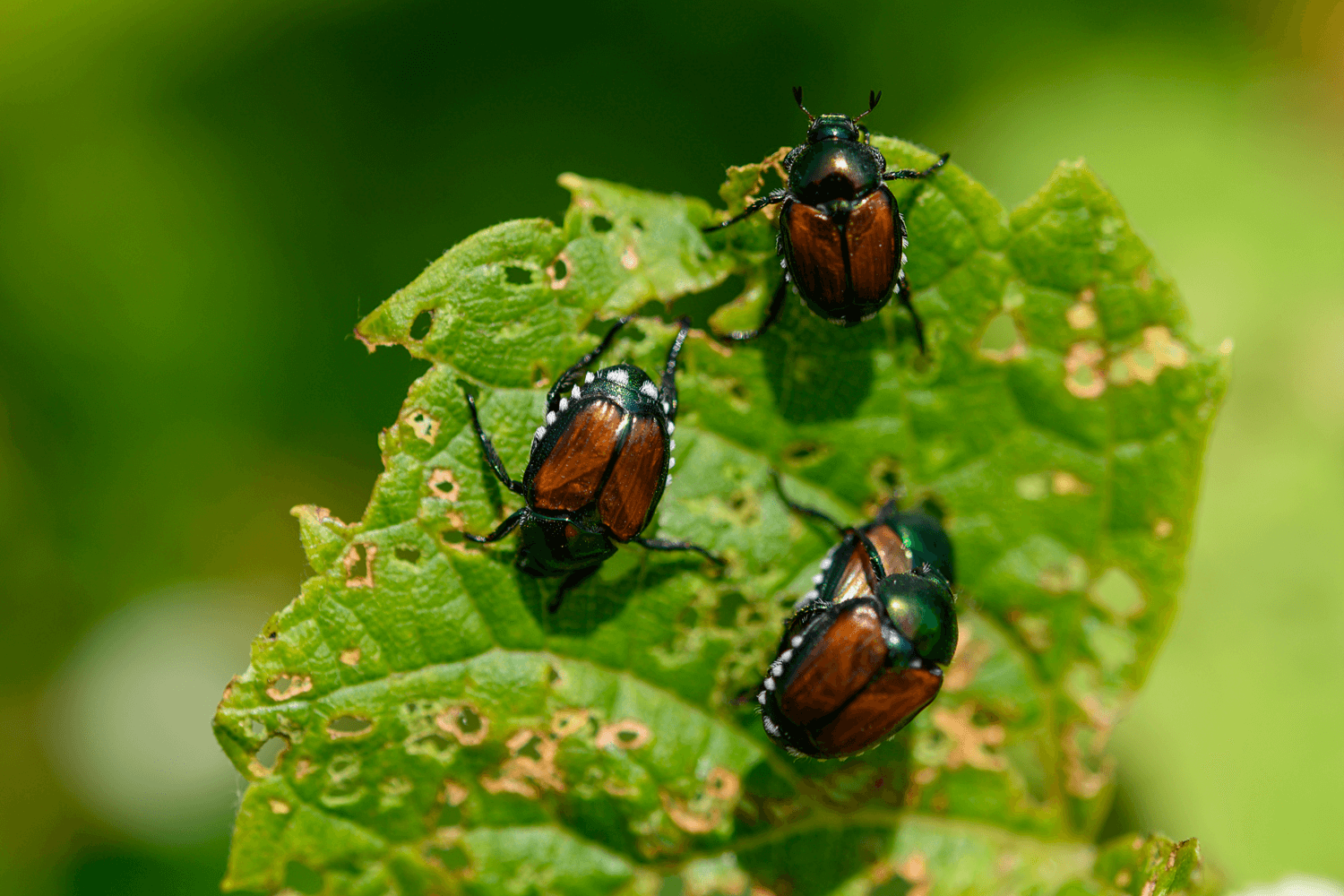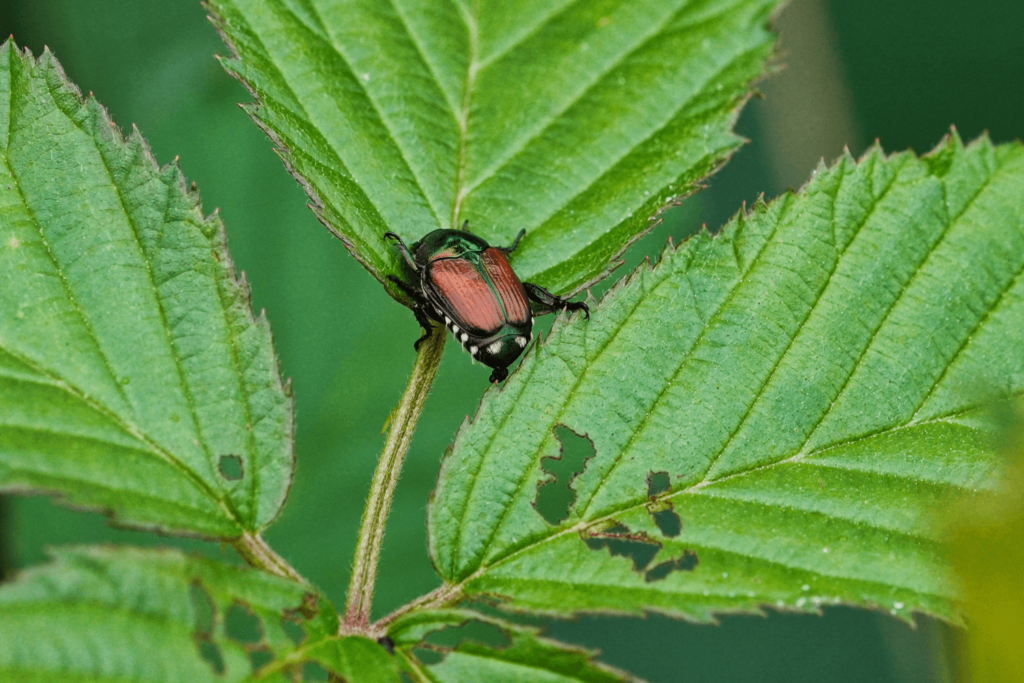In many gardens, the arrival of June and July also marks the return of a dreaded pest: the Japanese beetle. Their shimmering appearance may seem harmless at first glance, but these insects have a ferocious appetite for more than 300 plant species — from roses to grapes, fruit trees, and hibiscus. The good news? Not all of them need to be eliminated. Here’s everything you need to know to protect your garden — strategically.

🐛 Life Cycle of the Japanese Beetle
Understanding their development stages is the key to effective control:
- Eggs (late July to August)
Laid in sunny, well-irrigated lawns, especially in sandy soil. - Larvae / Grubs (August to October)
These white C-shaped grubs feed on grass roots and cause severe lawn damage. - Dormant Grubs (Winter)
They move deeper into the soil to overwinter. - Pupae (May to June)
The grubs pupate and transform into adult beetles underground. - Adults (Late June to August)
They emerge to feed, mate, and lay eggs — and the cycle continues.
Fun fact: Japanese beetle grubs love lush, irrigated turfgrass… but hate clover and low-input lawns. A clover-rich or alternative lawn can significantly reduce egg-laying.
🎯 How to Identify a Japanese Beetle
They’re small (about ½ inch or 1.5 cm), but very distinctive:
- Metallic green body
- Shiny copper-brown wings
- Five tufts of white hairs on each side of the abdomen
- Sometimes: a small white dot on the head
Important : That white dot is actually the egg of a tachinid fly, a natural predator of the beetle. If you see a beetle with this dot — don’t kill it! It’s already infected and will help reduce the population naturally.
Signs of Infestation (Adults and Grubs)
- Skeletonized leaves — adults eat between the veins, leaving a lace-like appearance
- Shiny beetles feeding in groups on sun-exposed plants
- Patchy, yellowing lawn that lifts easily — often caused by grub damage
- Increased beetle activity during hot, sunny afternoons
What to Do if They’ve Already Arrived
Hand-picking
In the early morning, shake plants over a bucket of soapy water. It’s easy, effective, and chemical-free.
Pheromone Traps
Use sparingly and place them far from your garden beds. They can help monitor beetle activity but may attract more than they trap if poorly placed.
Beneficial Nematodes (Heterorhabditis bacteriophora)
These microscopic worms infect and kill beetle grubs in the soil. Apply in late summer (August–September) or spring (May) for best results. The soil should be moist.
Grub Insecticide: Grub B Gon® MAX
A granular solution that targets grubs directly. Apply in spring or early fall on watered turf. Be sure to follow label instructions carefully.
Chemical Sprays (Adults)
Use as a last resort. Many insecticides harm pollinators and beneficial insects. Always prioritize manual and biological methods first.
How to Prevent Future Infestations
Maintain a Thick, Healthy Lawn
Beetles lay eggs in stressed, sparse, or overwatered turf. Aerate your soil, overseed in fall, and avoid daily watering during midsummer.
Consider Clover
Japanese beetles avoid laying eggs in lawns with clover and other mixed ground covers. Bonus: clover fixes nitrogen and reduces the need for fertilizer!
Practice Crop Rotation
Don’t plant the same highly susceptible species (roses, grapes, etc.) in the same spots year after year.
Use Repellent Plants in Your Landscape
Some plants help repel adult beetles, such as:
- Mint
- Garlic
- Chives
- Catnip
- Lemon-scented geraniums
Quick Action Plan
- Identify the beetles — and check for the white parasite dot.
- Act early — smaller populations are easier to control.
- Treat your lawn with nematodes or grub-specific products like Grub B Gon in spring or late summer.
- Encourage natural predators — let infected beetles live and consider attracting birds, toads, and beneficial insects to your garden.







